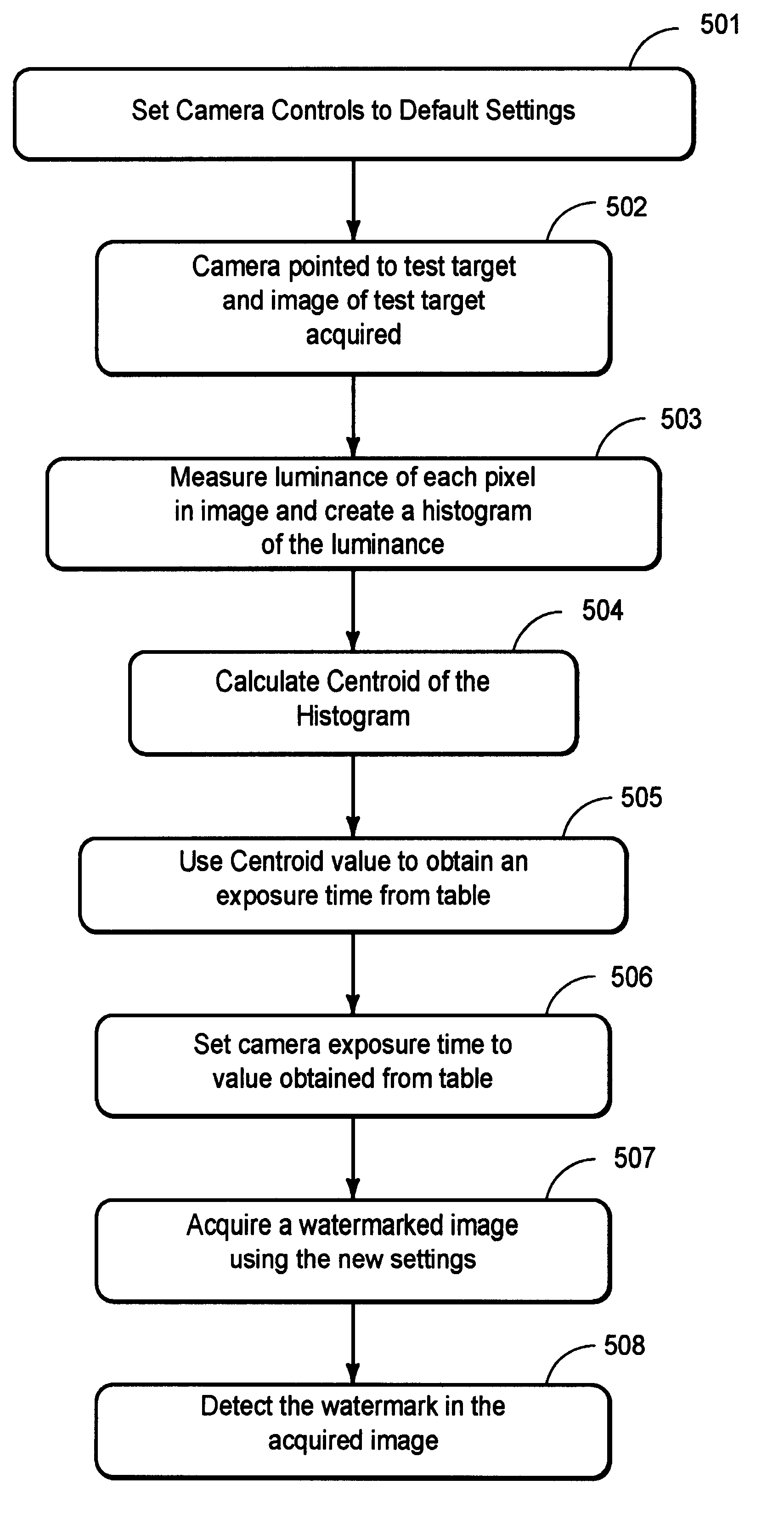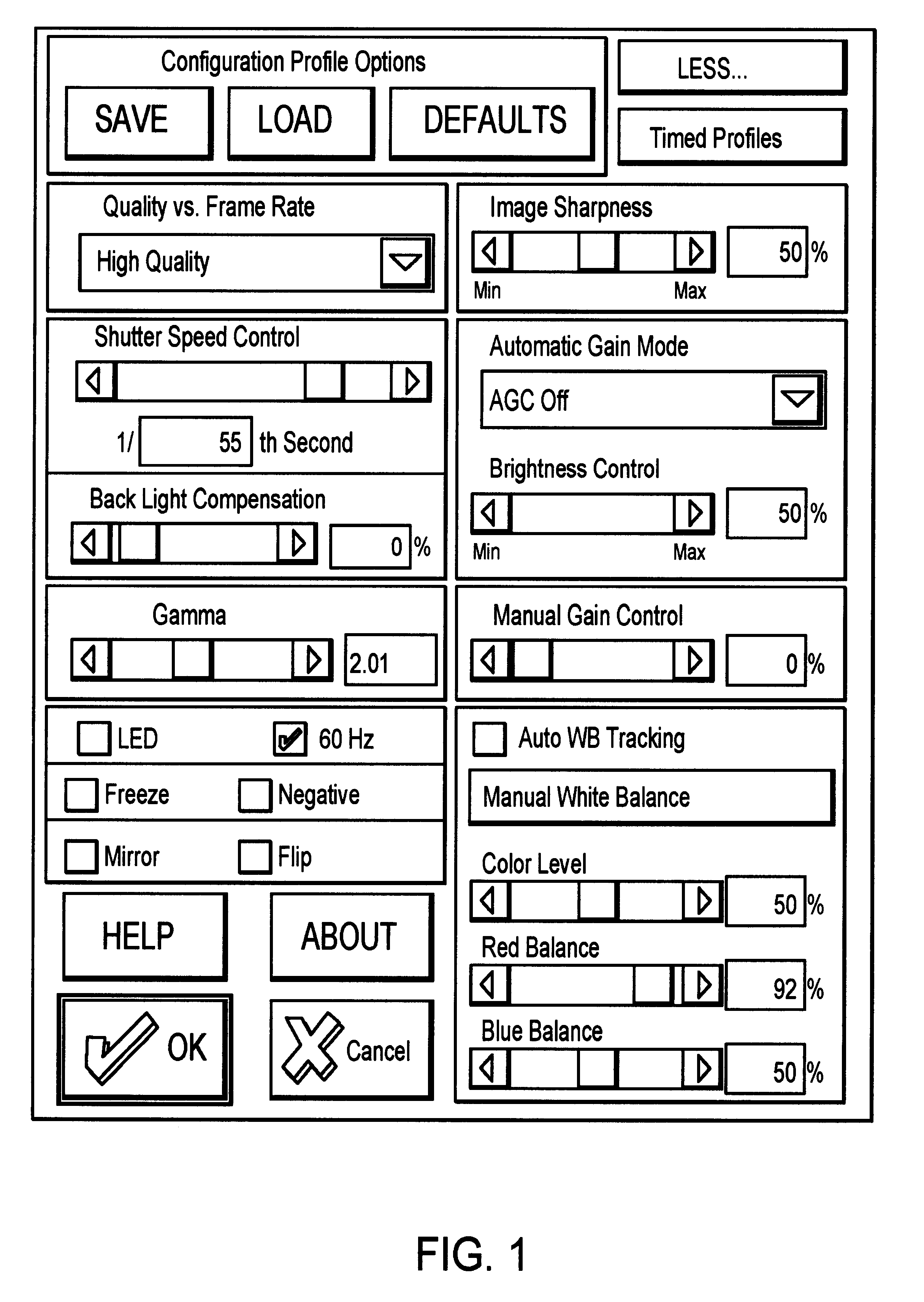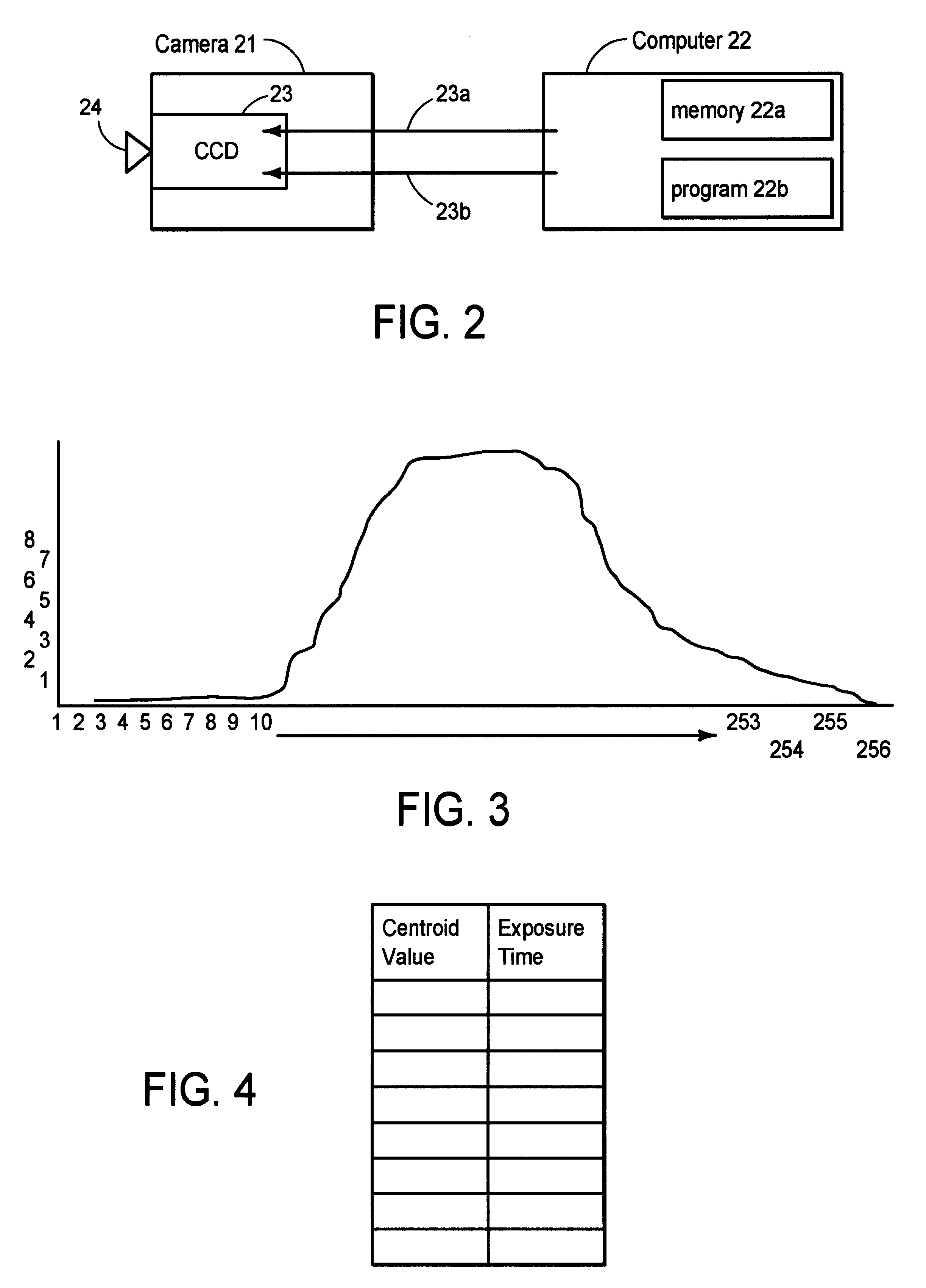Adjusting an electronic camera to acquire a watermarked image
a technology of electronic cameras and watermarks, which is applied in image enhancement, television systems, instruments, etc., can solve the problems of not always producing optimal conditions for detecting digital watermarks, and the optimal settings of cameras used in such systems are not necessarily optimal settings, so as to improve the characteristics, exposure time and gain of electronic cameras
- Summary
- Abstract
- Description
- Claims
- Application Information
AI Technical Summary
Problems solved by technology
Method used
Image
Examples
Embodiment Construction
The overall system shown in FIG. 2 includes a conventional digital camera 21 and a conventional control computer 22. As is conventional the camera 21 includes a CCD detector 23 and a lens 24 which focuses an image on the CCD detector. The CCD detector 23 has a gain control line 23a and an exposure control line 23b. The control computer 22 controls the values on the lines 23a and 23b. While for convenience of illustration and explanation the camera 21 is shown in FIG. 2 as an individual unit separated from control computer 22, it should be understood that in many commercially available systems the camera 21 is mounted within (or attached to) the computer 22 and lines 23a and 23b represent logical control lines rather than physical wires.
As is conventional the computer 22 includes memory 22a and programming 22b. For convenience and clarity of illustration and explanation these are illustrated as separate boxes in FIG. 2. The other conventional parts of the camera 21 and the computer 2...
PUM
 Login to View More
Login to View More Abstract
Description
Claims
Application Information
 Login to View More
Login to View More - R&D
- Intellectual Property
- Life Sciences
- Materials
- Tech Scout
- Unparalleled Data Quality
- Higher Quality Content
- 60% Fewer Hallucinations
Browse by: Latest US Patents, China's latest patents, Technical Efficacy Thesaurus, Application Domain, Technology Topic, Popular Technical Reports.
© 2025 PatSnap. All rights reserved.Legal|Privacy policy|Modern Slavery Act Transparency Statement|Sitemap|About US| Contact US: help@patsnap.com



